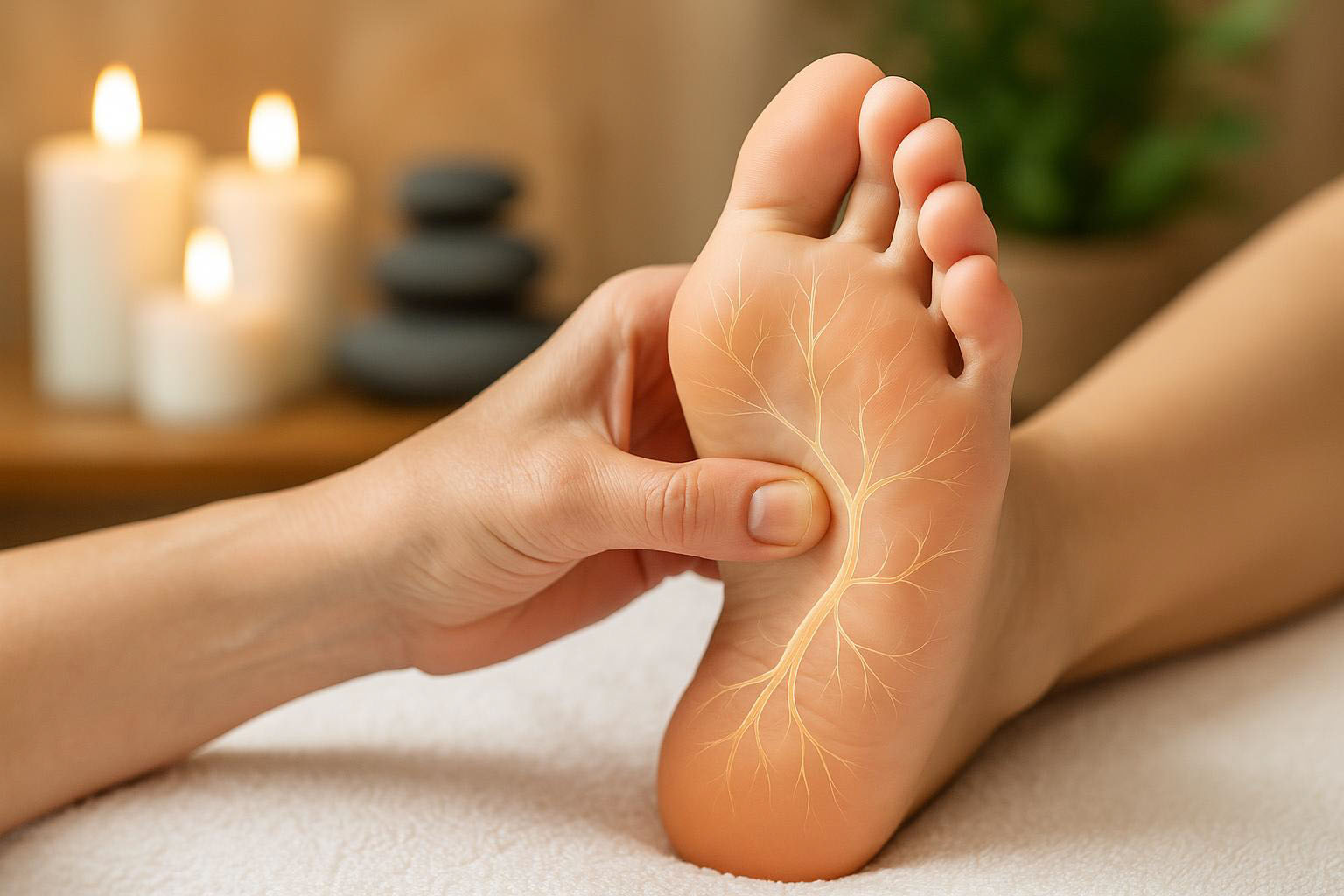August 3, 2025

Peripheral neuropathy is a condition that affects millions worldwide, causing burning, tingling, numbness, and even sharp pain—often in the feet and hands. It’s a frustrating diagnosis with limited treatment options, especially when medications fall short or bring unwanted side effects.
Enter reflexology: a foot-focused therapy that’s gaining attention for its potential role in relieving neuropathic symptoms. But does it work—and is it safe?
Neuropathy refers to damage to the peripheral nerves—those responsible for communicating between the brain, spinal cord, and the rest of the body. There are many causes, including:
Symptoms may include:
Reflexology is a manual therapy that applies pressure to specific areas on the feet, hands, or ears. These points are believed to correspond to organs and systems throughout the body. Practitioners believe that stimulating these reflex zones promotes relaxation, improves circulation, and supports healing.
Modern reflexology is rooted in zone theory, formalized in the 1930s by Eunice Ingham, and shares philosophical overlap with Traditional Chinese Medicine’s meridian system.
Reflexology may influence nerve signaling through the gate control theory of pain—where non-painful input can suppress painful sensations. This makes it useful for calming the nerve system and reducing pain perception.
Better blood flow means better delivery of nutrients and oxygen to damaged nerves. Reflexology may enhance microcirculation, particularly in the extremities.
Reflexology delivers targeted, safe stimulation to areas that often feel numb or disconnected. For some clients, this helps “re-map” the brain’s sensory awareness of the foot.
Chronic pain creates stress, and stress worsens pain. Reflexology may reduce cortisol and activate the parasympathetic nervous system, improving sleep and emotional well-being.
A study by Jeong IS (2006) found that diabetic patients who practiced self-foot reflexology showed improved peripheral blood flow and reduced neuropathy symptoms after consistent sessions (JKAFN).
A 2019 RCT by Noh & Park found that aroma reflexology significantly reduced foot temperature loss, anxiety, and neuropathy symptoms in gynecologic cancer patients receiving chemotherapy (PubMed).
Another 2024 study by Şimşek et al. found reflexology helped stabilize neuropathy scores and improve quality of life in women undergoing taxane-based chemotherapy (ResearchGate).
Several reviews—like Wanchai et al. (2020) and Klaus et al. (2024)—note that while reflexology shows promise for symptom relief, the research is not yet conclusive and varies in quality (BMC Complement Med).
A typical neuropathy-supportive reflexology session may include:
Many clients report feeling calm, tingly, or deeply relaxed afterward. Some even fall asleep during treatment.
In most cases, yes. Reflexology is safe for people with peripheral neuropathy as long as:
Always consult a physician if you have diabetes, are undergoing cancer treatment, or have circulatory issues before starting reflexology.
Reflexology tends to work best with consistent sessions:
Everyone responds differently. Tracking your symptoms after each session can help determine the right frequency.
To get the best results, reflexology can be part of a larger wellness plan:
While reflexology isn’t a cure for neuropathy, it may be a powerful, non-invasive tool to help manage the symptoms of nerve pain—especially when combined with other supportive treatments.
From improved circulation to calming the nervous system, reflexology offers a gentle path to relief for those living with tingling feet, burning toes, or numb soles. If you're exploring options beyond prescriptions, reflexology might just be the step forward your feet—and nerves—have been waiting for. Learn more about reflexology sessions here: Reflexology